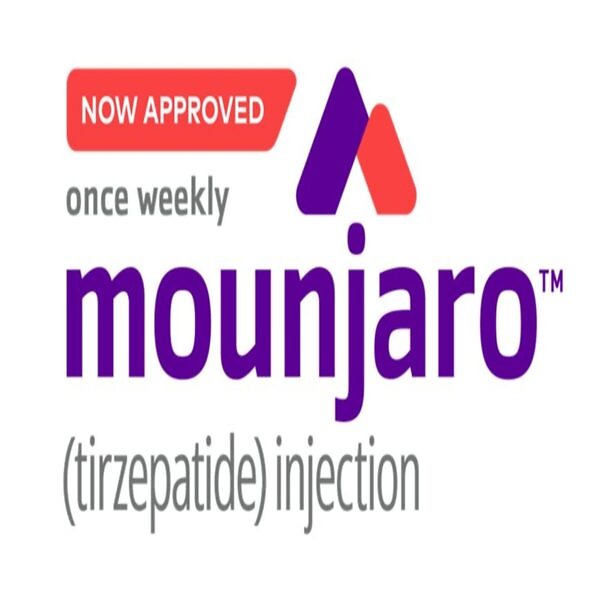Lansoprazole Orodispersible Tablets, 28 Tablets
Available in 2 strengths
15mg Orodispersible Tablets
30mg Orodispersible Tablets
£9.99 – £11.45
CompareCompare- Description
- Additional Information
- Brand
- How To Use
- Product Details
- Side Effects
- Ingredients
- How to Store
- Patient Information leaflet
- Reviews (0)
- Questions & Answers
Lansoprazole Orodispersible Tablets, 28 Tablets
Lansoprazole Orodispersible Tablets are a convenient and effective way to reduce heartburn symptoms. These tablets contain 15mg of lansoprazole or 30mg of lansoprazole, which works to reduce the amount of acid in your stomach by blocking an enzyme that produces it. The orodispersible tablets disintegrate quickly in your mouth, so you don’t need water for them to work. Because they are easy to swallow, they are ideal for people who have difficulty swallowing. These tablets can be taken once daily as part of your treatment plan and may provide up to 24 hours of relief from heartburn symptoms. They also help reduce the risk of stomach ulcers and other acid-related problems.
What Lansoprazole is and what it is used for
Proton pump inhibitors reduce the amount of acid that your stomach makes.
Your doctor may prescribe Lansoprazole for the following:
– Treatment of duodenal (gut) and stomach ulcers.
– Treatment of inflammation in your food pipe (reflux oesophagitis).
– Prevention of reflux oesophagitis.
– Treatment of heartburn and acid regurgitation.
– Treatment of infections caused by the bacteria Helicobacter pylori when given together with an antibiotic.
– Treatment or prevention of duodenal (gut) or stomach ulcers in patients requiring continued NSAID treatment (NSAID treatment is used against pain or inflammation).
– Treatment of Zollinger-Ellison syndrome.
Lansoprazole Orodispersible Tablets can be prescribed by a vet for cats and dogs for certain conditions.
Lansoprazole Orodispersible Tablets Reviews
After using Lansoprazole Orodispersible Tablets, it’s helpful to let others know about your experience. Reviews of an item help other users know that medicines received have helped the condition it is claimed for, how well the treatment worked or any issues to be aware of. We invite our users to leave a review of both their treatment and of the service provided. Click on the reviews tab to see if there has been feedback on this item.
What is the price of Lansoprazole Orodispersible Tablets?
The price of Lansoprazole Orodispersible Tablets starts from £9.99
Where can you buy Lansoprazole Orodispersible Tablets?
You can buy Loperamide 2mg Capsule at Dock Pharmacy Essex UK, UK Online Pharmacy.
Can you buy Lansoprazole Orodispersible Tablets Over the counter?
Lansoprazole Orodispersible Tablets is not available to buy over the counter. You need a prescription to buy Lansoprazole Orodispersible Tablets
| Brand | |
|---|---|
| Strenght | 15mg Orodispersible Tablets, 30mg Orodispersible Tablets |
Brand
Lansoprazole
How To Use
How to take Lansoprazole orodispersible
Always take this medicine exactly as your doctor has told you.
Check with your doctor or pharmacist if you are not sure.
The dose of Lansoprazole depends on your condition.
The recommended doses of Lansoprazole for adults are given below.
Your doctor will sometimes prescribe you a different dose and will tell you how long your treatment will last.
Product Details
What you need to know before you take Lansoprazole Orodispersible
Do not take Lansoprazole: – if you are allergic to lansoprazole or any of the other ingredients of this medicine (listed in section 6). Warnings and precautions Talk to your doctor or pharmacist before taking Lansoprazole: • if you have liver problems. The doctor may have to adjust your dose. Page 3 of 10 • if you have ever had a skin reaction after treatment with a medicine similar to lansoprazole that reduces stomach acid. • if you are due to have a specific blood test (Chromogranin A). • if you have low vitamin B12 levels or have risk factors for low vitamin B12 levels and receive long-term treatment with this medicines. As with all acid reducing agents, Lansoprazole Mylan may lead to a reduced absorption of vitamin B12. If you get a rash on your skin, especially in areas exposed to the sun tell your doctor as soon as you can, as you may need to stop your treatment with lansoprazole. Remember to also mention any other illeffects like pain in your joints. If your doctor has given you Lansoprazole in addition to other medicines intended to treat infection caused by the bacteria Helicobacter pylori (antibiotics) or together with anti-inflammatory medicines to treat your pain or rheumatic disease, please also read the package leaflets of these medicines carefully. Your doctor may perform or have performed an additional investigation called an endoscopy in order to diagnose your condition and/or exclude malignant disease. When taking Lansoprazole, inflammation in your kidney may occur. Signs and symptoms may include decreased volume of urine or blood in your urine and/or hypersensitivity reactions such as fever, rash, and joint stiffness. You should report such signs to the treating physician. If you take Lansoprazole for more than three months your magnesium levels in your blood may become very low. If you get very tired, disorientated, dizzy or have muscle twitches, convulsions (fits) or an increased heart rate, contact your doctor immediately as you may have low levels of magnesium in the blood (see section 4 ‘Possible side effects’). A decrease of magnesium levels in your blood may also lead to a decrease of calcium and potassium levels in your blood. Therefore, your doctor may monitor the magnesium levels in your blood. Taking a proton pump inhibitor like Lansoprazole, especially over a period of more than one year, may slightly increase your risk of fracture in the hip, wrist or spine. Tell your doctor if you have osteoporosis or if you are taking corticosteroids (which can increase the risk of osteoporosis). If you take Lansoprazole on a long-term basis (longer than 1 year) your doctor will probably keep you under regular surveillance. You should report any new and exceptional symptoms and circumstances whenever you see your doctor. During treatment If diarrhoea occurs during treatment with Lansoprazole contact your doctor immediately, as lansoprazole has been associated with a small increase in infectious diarrhoea. Other medicines and Lansoprazole Tell your doctor or pharmacist if you are taking, have recently taken or might take any other medicines, including medicines obtained without a prescription. In particular tell your doctor if you are taking medicines containing any of the following: • HIV protease inhibitors such as atazanavir and nelfinavir (used to treat HIV), • methotrexate (used to treat autoimmune disease and cancer), • ketoconazole, (used to treat Cushing’s syndrome – when the body produces an excess of cortisol), • itraconazole (used to treat fungal infections), • rifampicin (used to treat tuberculosis), • digoxin (used to treat heart problems), • warfarin (used to treat blood clots), Page 4 of 10 • theophylline (used to treat asthma), • tacrolimus (used to prevent transplant rejection), • fluvoxamine (used to treat depression and other psychiatric conditions), • antacids (used to treat heartburn or acid regurgitation such as aluminium hydroxide or magnesium carbonate), • sucralfate (used for healing ulcers), • St John´s wort (Hypericum perforatum) (used to treat mild depression). Pregnancy and breast-feeding The use of Lansoprazole during pregnancy is not recommended as there is no data available. It is not known if lansoprazole is present in breast milk. Discuss with your doctor whether it is more beneficial for you to continue taking this medicine or for you to breast-feed your child. If you are pregnant or breast-feeding, think you may be pregnant or are planning to have a baby ask your doctor or pharmacist for advice before taking this medicine. Driving and using machines Side effects such as dizziness, vertigo (a spinning sensation when sitting or standing still), feeling sleepy and problems with your sight sometimes occur in patients taking lansoprazole. If you experience side effects like these you should take caution as your ability to react may be decreased. You alone are responsible to decide if you are in a fit condition to drive a motor vehicle or perform other tasks that demand increased concentration. Because of their effects or undesirable effects, one of the factors that can reduce your ability to do these things safely is your use of medicines. Descriptions of these effects can be found in other sections. Read all the information in this leaflet for guidance. Discuss with your doctor or pharmacist if you are unsure about anything. Lansoprazole contains sucrose, aspartame and sodium This medicine contains 5.97 mg of aspartame per tablet. This medicine contains 11.93 mg of aspartame per tablet. Aspartame is a source of phenylalanine. It may be harmful if you have phenylketonuria (PKU), a rare genetic disorder in which phenylalanine builds up because the body cannot remove it properly. This medicine contains sucrose If you have been told by your doctor that you have an intolerance to some sugars, contact your doctor before taking this medicine. This medicine contains less than 1 mmol sodium (23 mg) per tablet, that is to say essentially ‘sodium-free’.
Side Effects
Possible side effects
Like all medicines, this medicine can cause side effects, although not everybody gets them. If you think you may have any of the following side effects, stop taking this medicine and contact your doctor or go to your nearest hospital emergency room immediately. • An increase in the number of infections you get causing fevers, severe chills, sore throat and chest infections. These may be signs of a low number of white bloods cells (leucopenia – uncommon, may affect up to 1 in 100 people). • You may also experience tiredness, coldness in your hands and feet and pale skin with unexplained bruising or bleeding for longer than normal. These may be signs of a severe reduction of all types of blood cells (pancytopenia – very rare, may affect up to 1 in 10,000 people). • A sudden onset of a severe dull pain around the top of your stomach. The ache may travel to your back and may feel worse after you have eaten. These may be the signs of an inflamed pancreas (rare, may affect up to 1 in 1,000 people). • A yellowing of the skin or whites of the eyes, loss of appetite, feeling sick (nausea), pale stools or dark urine. These may be signs of serious problems with your liver (rare, may affect up to 1 in 1,000 people). • A swollen face, lips, tongue or throat, causing difficulty swallowing or breathing, fever, rash that is commonly known as hives, swelling and sometimes a rapid fall in blood pressure. These may be signs of serious allergic reactions, including anaphylactic shock (rare, may affect up to 1 in 1,000 people). • Producing little or no urine, cloudy urine or blood in the urine, pain when passing urine or lower back pain. These may be signs of serious kidney problems (rare, may affect up to 1 in 1,000 people). • Reddening of the skin, blistering, severe inflammation or peeling and skin loss. These may be signs of serious skin reactions such as Stevens-Johnson syndrome or toxic epidermal necrolysis (very rare, may affect up to 1 in 10,000 people). • Severe or persistent diarrhoea. This side effect should be reported to your doctor as the medicine has been associated with a small increase in infectious diarrhoea (very rare, may affect up to 1 in 10,000 people). • Rash, possibly with pain in the joints (frequency not known, cannot be estimated from the available data). Other possible side effects: Page 8 of 10 Common (may affect up to 1 in 10 people): • headache, dizziness, • diarrhoea, constipation, stomach pains, feeling sick (nausea) or being sick (vomiting), wind, dry mouth or throat, • skin rash, itching, • an increase in liver enzyme levels in the blood which can be seen in a blood test, • tiredness, • benign polyps in the stomach. Uncommon (may affect up to 1 in 100 people): • depression, • joint or muscle pain, • fracture of the hip, wrist or spine, • fluid retention or swelling, • changes in blood cell counts. Rare (may affect up to 1 in 1,000 people): • fever, • pain when swallowing or difficulty swallowing with white spots at the back of the throat. These may be signs you have a fungal infection of the food pipe. • restlessness, drowsiness, • confusion, hearing, seeing or feeling things that aren’t there (hallucinations), problems sleeping (insomnia), • problems with your eyesight, • a spinning sensation when standing still (vertigo), • a change in the way things taste, loss of appetite, swollen tongue (glossitis), • skin reactions such as burning or pricking feeling under the skin, bruising, reddening and excessive sweating, • skin sensitivity to light, • hair loss, • feelings of ants creeping over the skin (paraesthesia), trembling, • anaemia (paleness), • breast swelling in males, impotence. Very rare (may affect up to 1 in 10,000 people): • inflammation of your mouth (stomatitis), • a decrease in sodium levels in the blood, an increase in the cholesterol or fat levels in the blood which can be seen in a blood test. Frequency not known (frequency cannot be estimated from the available data): • visual hallucinations • if you are on Lansoprazole for more than three months it is possible that the levels of magnesium in your blood may fall. Low levels of magnesium can be seen as fatigue, involuntary muscle contractions, disorientation, convulsions, dizziness, increased heart rate. If you get any of these symptoms, please tell your doctor promptly. Low levels of magnesium can also lead to a reduction in potassium or calcium levels in the blood. Your doctor may decide to perform regular blood tests to monitor your levels of magnesium. Reporting side effects If you get any side effects, talk to your doctor or pharmacist. This includes any possible side effects not listed in this leaflet. You can also report side effects directly via the Yellow Card Scheme. Website: www.mhra.gov.uk/yellowcard or search for MHRA Yellow Card in the Google Play or Apple App Store. By reporting side effects you can help provide more information on the safety of this medicine
Ingredients
What Lansoprazole contains
The active substance is lansoprazole.
The other ingredients are sugar spheres, light magnesium carbonate (E504); crospovidone (E1202); hydroxypropylcellulose (E463); methacrylic acid – ethyl acrylate, copolymer (1:1); triethyl citrate (E1505); sodium hydroxide (E524); talc (E553b); polysorbate (E433); macrogol; iron oxide red (E172); iron oxide yellow (E172); mannitol (E421); microcrystalline cellulose (E460); sodium starch glycolate; aspartame (E951); sodium laurilsulfate; sodium hydrogen carbonate (E500); citric acid monohydrate (E330); strawberry flavour and magnesium stearate. (see section 2 ‘Lansoprazole contains sucrose, aspartame and sodium’)
How to Store
How to store Lansoprazole
Keep this medicine out of the sight and reach of children. Store in the original container in order to protect from moisture. Bottles: Use within 100 days of opening. Keep the bottle tightly closed in order to protect from moisture. Do not use this medicine after the expiry date which is stated on the blister, carton and bottle after EXP. The expiry date refers to the last day of that month. Do not throw away any medicines via wastewater or household waste. Ask your pharmacist how to throw away medicines you no longer use. These measures will help protect the environment
Patient Information leaflet
Click here for the Patient Information leaflet
Please read before using the product
Only logged in customers who have purchased this product may leave a review.
Questions and answers of the customers
There are no questions yet, be the first to ask something for this product.
Other Products From This Seller
- Validated for 2-8°C for 30 to 36 hrs*
- Perfect for long-haul flights
- Carries pens, bottles, vials and syringes
- Manufactured from excellent quality materials
£102.50
- Availability: in stock
- Validated for 2-8°C for 18 to 24hrs*
- Perfect for long haul flights
- Carries pens, bottles, vials and syringes
- Integrated digital thermometer
- Manufactured from excellent quality materials
£69.45
- Availability: in stock
- Validated for 2-8°C for 15 to 20hrs*
- Perfect for long haul flights
- Carries pens, bottles, vials and syringes
- Integrated digital thermometer
- Manufactured from excellent quality materials
£54.50
- Availability: in stock
Steglatro Tablets – Ertugliflozin Tablets available in 2 strengths:
- Steglatro 5mg Tablets – Ertugliflozin 5mg Tablets
- Steglatro 15mg Tablets – Ertugliflozin 15mg Tablets
£49.50
- Availability: in stock
Original price was: £43.20.£39.50Current price is: £39.50.
Ursodeoxycholic Acid Tablets 250mg – Cholurso Tablets, 60 Tablets Introducing Cholurso Tablets the brand name of Ursodeoxycholic Acid Tablets 250mg – Your Solution for Gallstone Management and Liver Health Ursodeoxycholic Acid 250mg Tablets is a cutting-edge pharmaceutical formulation designed to positively influence bile composition, making it a versatile solution for various health concerns. Ursodeoxycholic Acid, […]
Learn MoreOriginal price was: £43.20.£39.50Current price is: £39.50.
- Availability: in stock
£156.00 – £210.00
Please note you need insulin pen needles to use Mounjaro Injection
Mounjaro Injection – Tirzepatide Injection, 4 Pre-filled Pens
Available in 6 strengths:
- Mounjaro 2.5mg Injection
- Mounjaro 5mg Injection
- Mounjaro 7.5mg Injection
- Mounjaro 10mg Injection
- Mounjaro 12.5mg Injection
- Mounjaro 15mg Injection
Learn More
£156.00 – £210.00
- Availability: in stock
Timoptol LA Gel – Timolol Eye Gel is available in 2 strengths
- Timoptol LA 0.5% Gel
- Timoptol LA 0.25% Gel
£7.50
- Availability: in stock
Original price was: £43.50.£39.75Current price is: £39.75.
One-Alpha Drops 2mcg/1ml – Alfacalcidol Drops 2mcg/1ml
Learn MoreOriginal price was: £43.50.£39.75Current price is: £39.75.
- Availability: in stock
Original price was: £5.99.£5.39Current price is: £5.39.
Ideal for irrigating and cleansing the eye, or a wound
Learn MoreOriginal price was: £5.99.£5.39Current price is: £5.39.
- Availability: in stock
Ultimate Surefit Erection Ring Set 15222 – Constrictor Rings For Erectile Dysfunction Experience Confidence and Pleasure with the Ultimate Surefit maintenance ring set – Your Key to Intimate Well-being Introducing the Ultimate Surefit Erection Ring, a premium solution meticulously designed for those seeking to overcome the challenges of erectile dysfunction. Crafted with precision and comfort […]
Learn More£58.50
- Availability: in stock

















Reviews
There are no reviews yet.